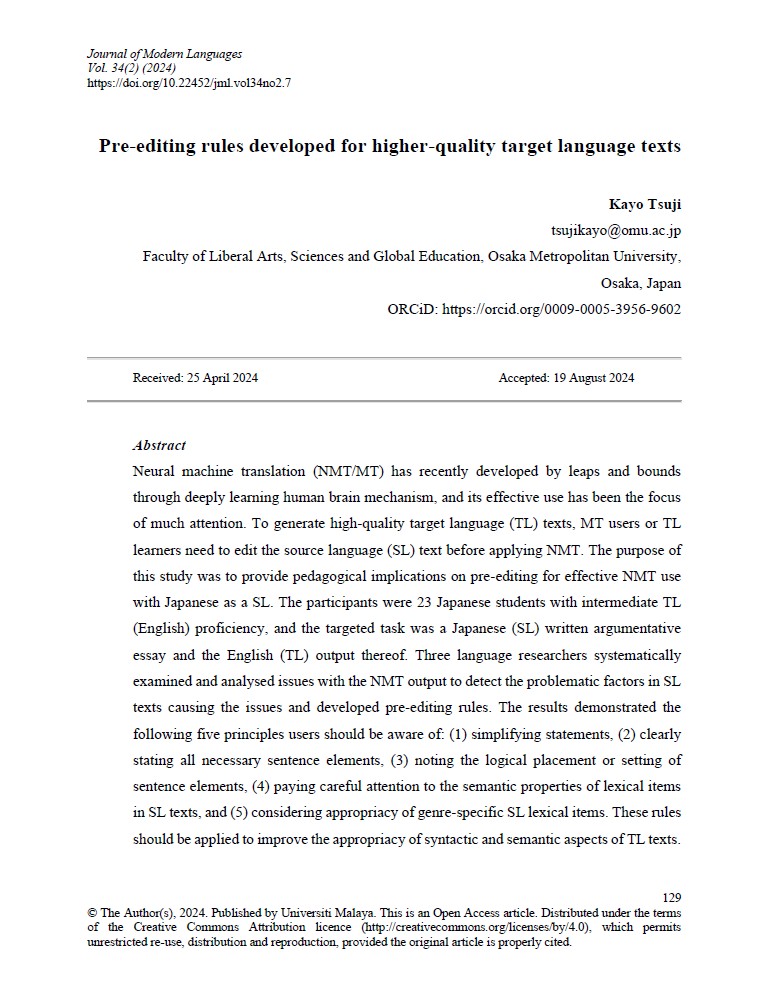Pre-editing rules developed for higher-quality target language texts
Main Article Content
Abstract
Neural machine translation (NMT/MT) has recently developed by leaps and bounds through deeply learning human brain mechanism, and its effective use has been the focus of much attention. To generate high-quality target language (TL) texts, MT users or TL learners need to edit the source language (SL) text before applying NMT. The purpose of this study was to provide pedagogical implications on pre-editing for effective NMT use with Japanese as a SL. The participants were 23 Japanese students with intermediate TL (English) proficiency, and the targeted task was a Japanese (SL) written argumentative essay and the English (TL) output thereof. Three language researchers systematically examined and analysed issues with the NMT output to detect the problematic factors in SL texts causing the issues and developed pre-editing rules. The results demonstrated the following five principles users should be aware of: (1) simplifying statements, (2) clearly stating all necessary sentence elements, (3) noting the logical placement or setting of sentence elements, (4) paying careful attention to the semantic properties of lexical items in SL texts, and (5) considering appropriacy of genre-specific SL lexical items. These rules should be applied to improve the appropriacy of syntactic and semantic aspects of TL texts. They may also assist TL learners translating from Japanese to English independently, since the output of recent NMTs is largely considered close to human translations.
Downloads
Download data is not yet available.
Article Details
How to Cite
Tsuji, K. (2024). Pre-editing rules developed for higher-quality target language texts. Journal of Modern Languages, 34(2), 129–147. https://doi.org/10.22452/jml.vol34no2.7
Section
Articles

This work is licensed under a Creative Commons Attribution-NonCommercial 4.0 International License.

